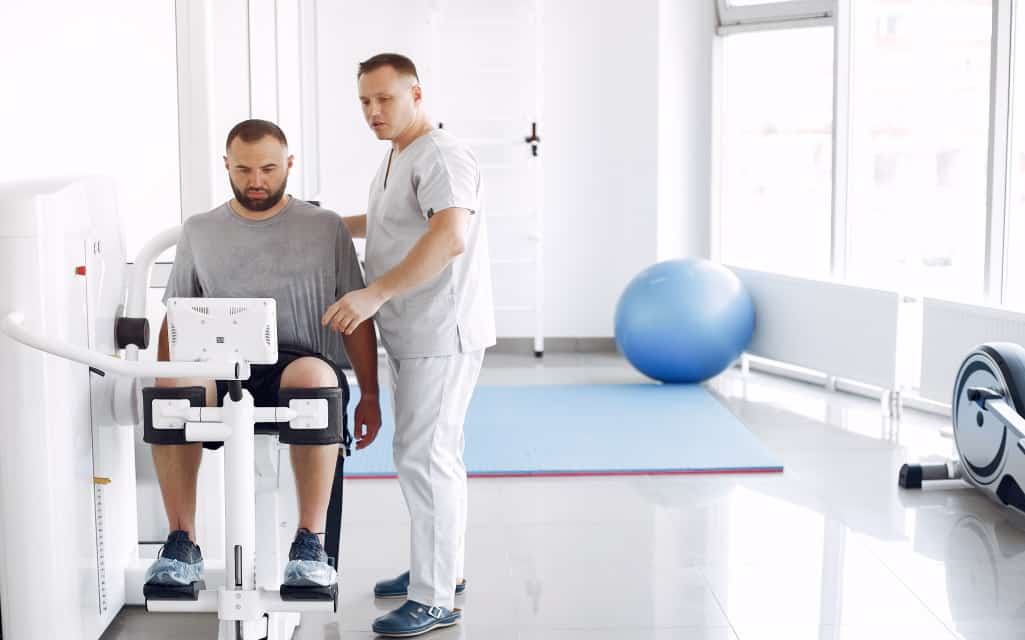What is rehabilitation
Rehabilitation — A word that has many implications to many. Rehabilitation is a crucial element for those who have undergone medical situations that require any type of post-medical intervention. It has numerous benefits — the main one is that it prevents different complications that may ensue from said medical intervention, like for example, a reconstructive surgery.
Rehabilitation is a form of recovery that aims to optimize the return to normalcy of any patient that needs to interact with their former environment once again.
The functional capacity assessments, exercise-based interventions, and patient education utilized in rehabilitation are all essential tools to ensure the best outcomes for patients. Furthermore, rehabilitation may be tailored to specific goals depending on the individual’s needs; this could include cognitive therapy or help with daily activities like dressing and bathing. To sum up, rehabilitation is an important part of medical care that helps patients return to their
Inpatient and outpatient rehabilitation programs
Rehabilitation can also be divided into two types: inpatient rehabilitation, and outpatient rehabilitation.
Inpatient rehabilitation
This type of rehab consists of rehabilitation services that are mostly provided during a stay at a hospital or medical facility.
Outpatient rehabilitation
Outpatient rehab consists of attention received once the person is no longer staying at the hospital.
In this article, we are going to mention the 7 advantages of inpatient rehabilitation programs. We are also going to address the most common rehabilitation inpatient services. Finally, we are also going to give you a guide on how to find the best inpatient rehabilitation hospitals, and derived services.
Requirements for inpatient rehabilitation
The only authorized people who are capable of correctly gauging whether an individual is apt to utilize inpatient or outpatient services are certified, medical staff. Oftentimes, the staff will arrive at a conclusion once a battery of tests is done – and only then, can they determine a verdict, and assign a diagnosis.
As a general rule, to participate in an inpatient rehabilitation program you need to be medically stable (that means your vital functions such as heart rate, and respiratory rate, amongst others are fixed and balanced). You’ll also be required to withstand precise therapies such as physical therapy, occupational therapy, and speech therapy (if needed).
When is the patient able to choose either an inpatient rehabilitation program or an outpatient one?
The answer is simple: It is best to leave it up to the doctors. Once the diagnosis is achieved, the medical staff will indicate what is the best option. If there is more than one available plan, then, in that case, the patient will decide.
Children, mentally altered patients, and those who pose a threat are not likely to express consent on their treatments.
7 advantages of inpatient rehabilitation programs
There are many reasons why a patient should consider inpatient rehabilitation services. But some of them are:
Safety and quality of rehabilitation and care
A person in a safe controlled environment – like a hospital or clinic – is much more likely to find adequate caretaking — with its grade A logistics than at home.
Comfortable rehab amenities
Most of the time, inpatient rehabilitation programs include meals, visits from doctors, and daily therapies, allowing the patient to focus almost exclusively on their recovery. And if you are suffering from cardiovascular diseases, a well trained EKG tech would always be available whenever needed. It is no lie that EKG technicians along with other medical careers are booming right now.
24/7 care
Personalized care and rigorous monitoring are must-haves during the early stages of rehabilitation, which can only be achieved through robust inpatient programs.
Structured treatment programs
The programs are mostly structured around each individual’s needs — they involve medical assessment, daily therapy, and eventual discharge planning.
Multiple therapies
Some of the therapies included are physical rehab, which mostly encompasses physical therapy, occupational therapy, and respiratory therapy, to mention a few.
Eliminating the stressors
A big contributing factor when receiving rehabilitation is the number of stressors in the environment — at the hospital most of those are eliminated or attenuated.
Success rates
Inpatient rehabilitation success rates are higher: this one is self-explanatory, as the conditions given in hospital foster recuperation to a much higher extent — outpatient programs face severe logistical and professional limitations.
Finding the right rehabilitation program
Finding the right rehabilitation program can be a daunting task at times, so here are some tips to make to help you out:
- Determine if the facility offers treatments that care for needs: This means that if a person needs to be treated for a bone fracture, going to a neurological rehabilitation center may not be the best choice; “different places for different needs”
- Figure out if your health insurance provider covers the costs of the facility services required: This is very important, as every healthcare provider has different service terms
- See if the facility is logistically suited for the patient: If the place is on the other side of the country, it can make matters more difficult.
- First, consult if the place and staff are certified by different boards, and commissions: Some examples are the Commission on Accreditation of Rehabilitation Facilities (CARF) and The Joint Commission
- Ask if 24-hour care services are provided: Most rehab centers only offer three hours, five times a week as a bare minimum stipulated by law, so this also needs to be addressed depending upon the severity of the case
- Another important service that needs to be considered is supplemental services that enhance the baseline treatment – like music therapy, specific post-inpatient rehab strength, and conditioning programs.
- Gauge the willingness of the staff to help, and if they encourage friends and family members to be involved.
- Inquire about their outpatient programs.



